Snapping Hip Syndrome
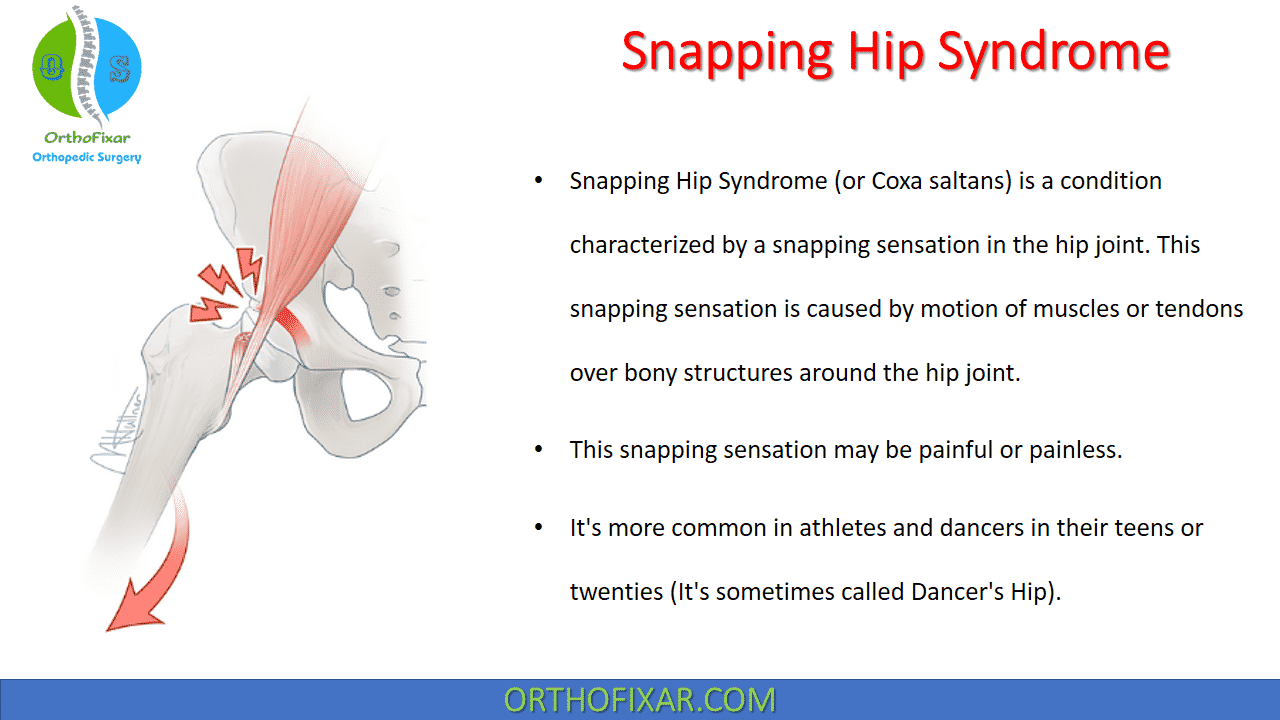
Snapping Hip Syndrome (or Coxa Saltans) is a condition characterized by a snapping sensation in the hip joint. This snapping sensation is caused by motion of muscles or tendons over bony structures around the hip joint.
This snapping sensation may be painful or painless.
Snapping Hip Syndrome is more common in athletes and dancers (It’s sometimes called Dancer’s Hip), it mostly occurs at the age of 15-35 years.
See Also: Hip Joint Anatomy
Snapping Hip Types
Multiple etiologies for snapping hip (coxa saltans) exist. When no cause can be identified, as in most patients, the condition is classified as a myopathy of idiopathic origin.
The three type of Snapping hip are categorized as:
- Internal snapping hip.
- External snapping hip.
- Intraarticular snapping hip.
Although the physical sensation of snapping may be the patient’s only complaint, pain may arise from the anterior or lateral aspect of the hip, especially when there is concurrent bursal inflammation. Labral tears may present with symptoms similar to snapping hip syndrome.
Internal Snapping Hip Syndrome:
The Internal Snapping Hip Syndrome has been attributed to:
- The iliopsoas snapping over structures just deep to it, namely the femoral head, proximal lesser trochanter, pectineus fascia, and iliopectineal eminence, which produces a snapping in the anterior groin region;
- Stenosing tenosynovitis of the iliopsoas insertion.
The iliopsoas tendon is held in position by the inguinal ligament. When the hip is flexed, abducted, and externally rotated, the tendon is positioned laterally; when the hip is extended, adducted, and internally rotated, the tendon is medially positioned.
It’s diagnosed with extension and internal rotation of the hip from a flexed and externally rotated position, The
snapping can be reduced by applying manual pressure on the iliopsoas tendon where it crosses the hip.
Dynamic ultrasonography, arthrography, and bursography may also be helpful in determining the diagnosis.
See Also: Thomas Test of the Hip
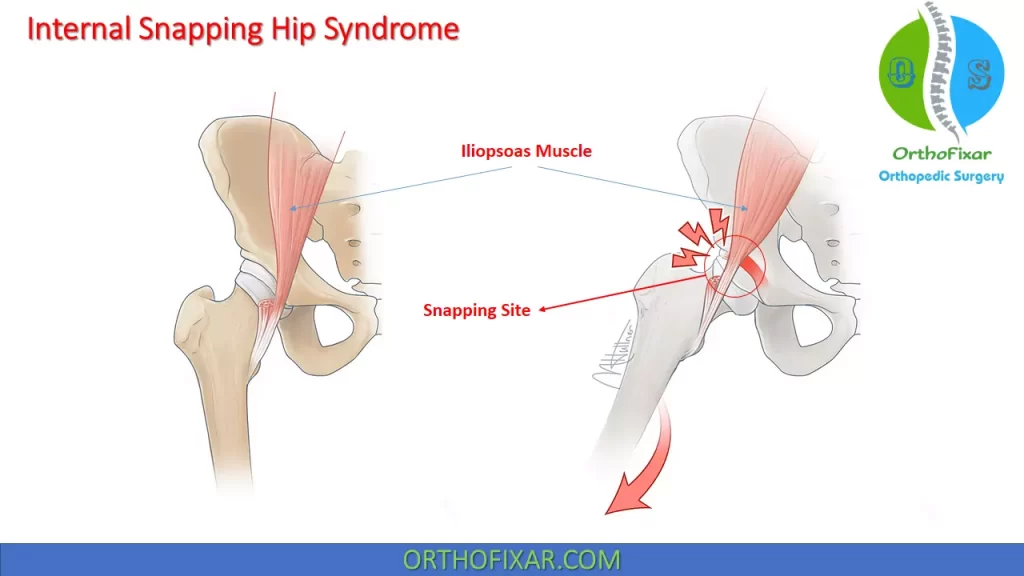
External snapping hip:
The external causes include snapping of the iliotibial band or gluteus maximus over the greater trochanter, or the iliopsoas impinges on the hip capsule.
This condition is more common in females with a wide pelvis and prominent trochanters and is exacerbated with running on banked surfaces.
Snapping may be reproduced with passive hip flexion from an adducted position. Tightness of tensor fascia lata diagnosed with Ober’s Test.
Stretching and strengthening exercises, modalities such as ultrasonography, and occasionally surgical iliotibial lengthening may relieve the snapping.
See Also: ITB Friction Syndrome
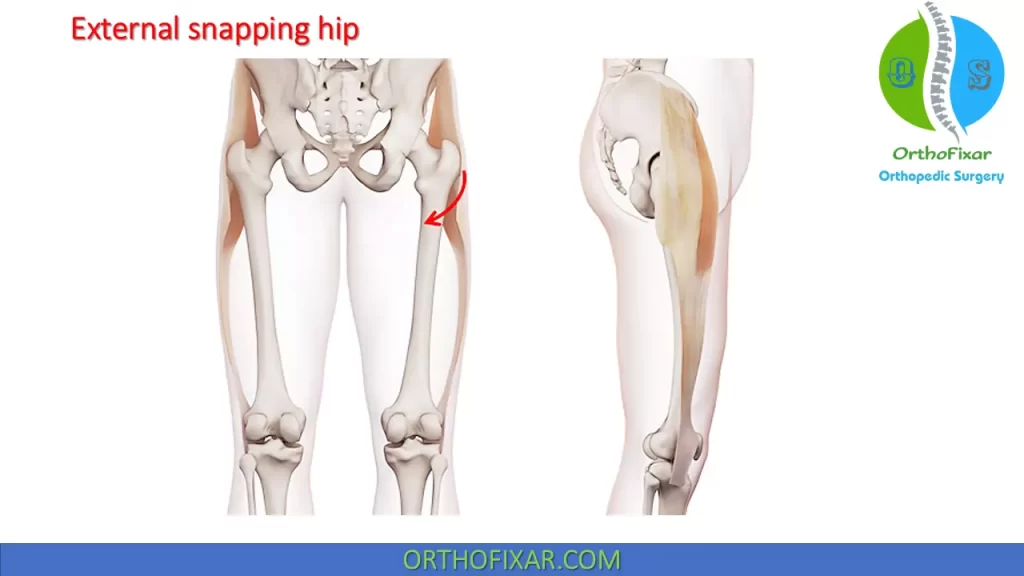
Intra-articular snapping hip:
The intra-articular causes have included synovial chondromatosis, loose bodies, fracture fragments, and
labral tears.
Snapping of the iliofemoral ligament over the anterior femoral head has also been described, as has snapping of the long head of biceps origin over the ischium.
External snapping hip is often visible while internal snapping hip is not, but may be audible.
Particular areas of attention during the examination include:
- observation of genu recurvatum,
- leg length,
- knee flexion contracture,
- overpronation of the foot, hip flexion contracture,
- the amount of internal or external rotation of the lower extremity during static standing.

Imaging Study
Radiographs is normal.
Ultrasound can demonstrate the snapping band in either internal or external snapping.
MRI is useful to rule-out intra-articular pathology, and may show inflamed bursa.
Snapping Hip Syndrome Treatment
The non-operative treatment includes:
- Activity modification.
- Physical therapy.
- Corticosteroid injection.
Snapping hip syndrome surgery treatment includes:
- Greater trochanteric bursa excision with Z-plasty of iliotibial band.
- iliopsoas tendon release.
- Hip arthroscopy with removal of loose bodies or labral debridement/repair.
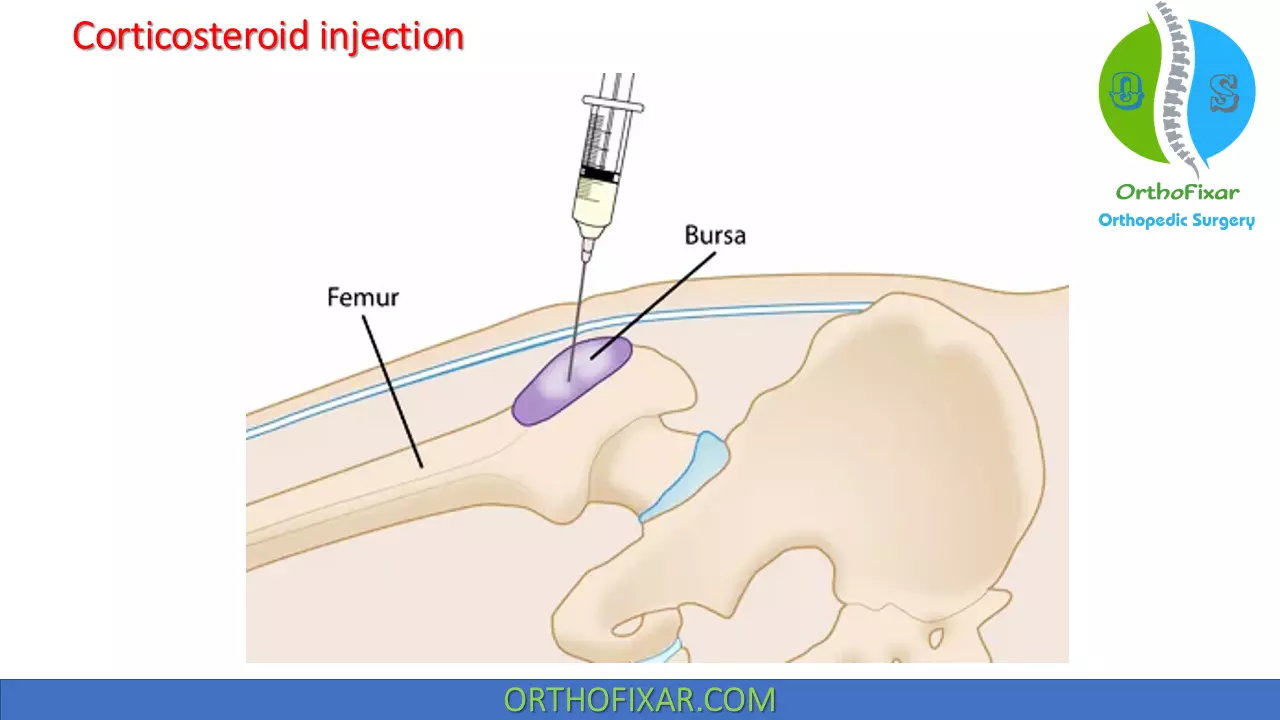
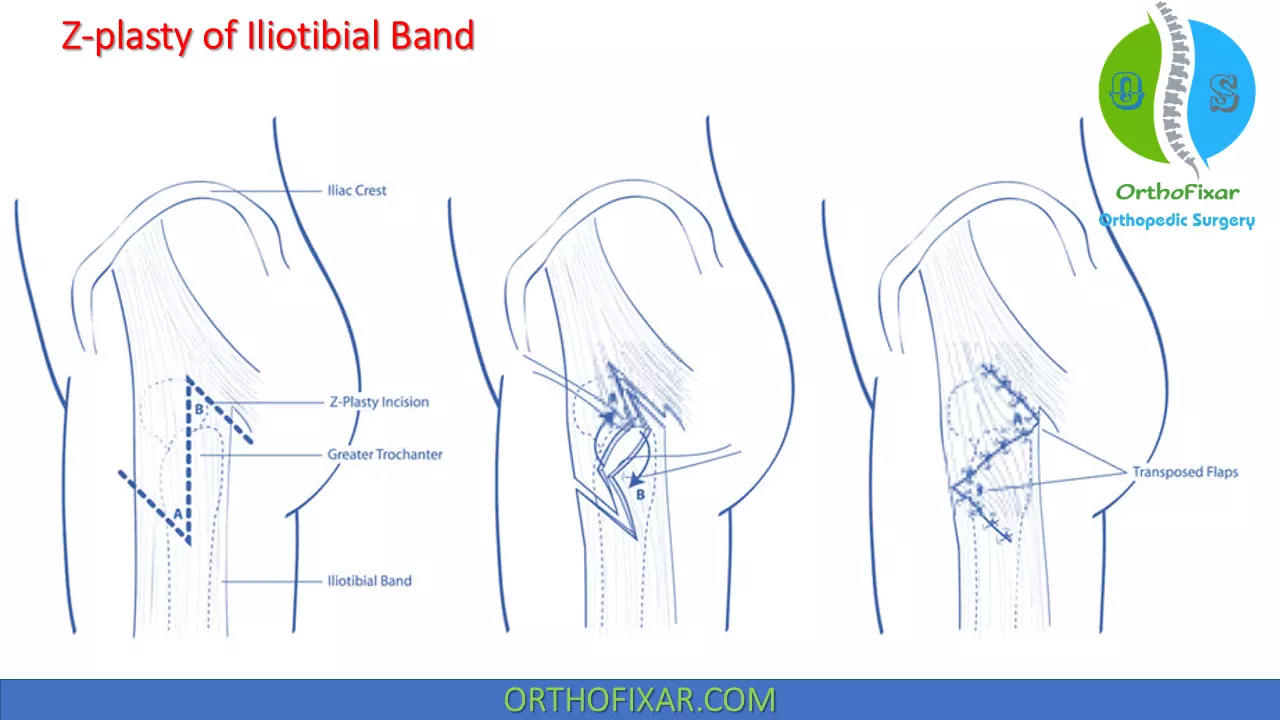
If an imbalance of the tensor fascia lata or iliopsoas is producing the symptoms, the treatment is focused on reconditioning and prevention. This includes increasing the flexibility of the soft tissues, and the correction of any strength imbalances. For example, if the flexibilty of the ITB is decreased, the emphasis is on stretching the ITB.
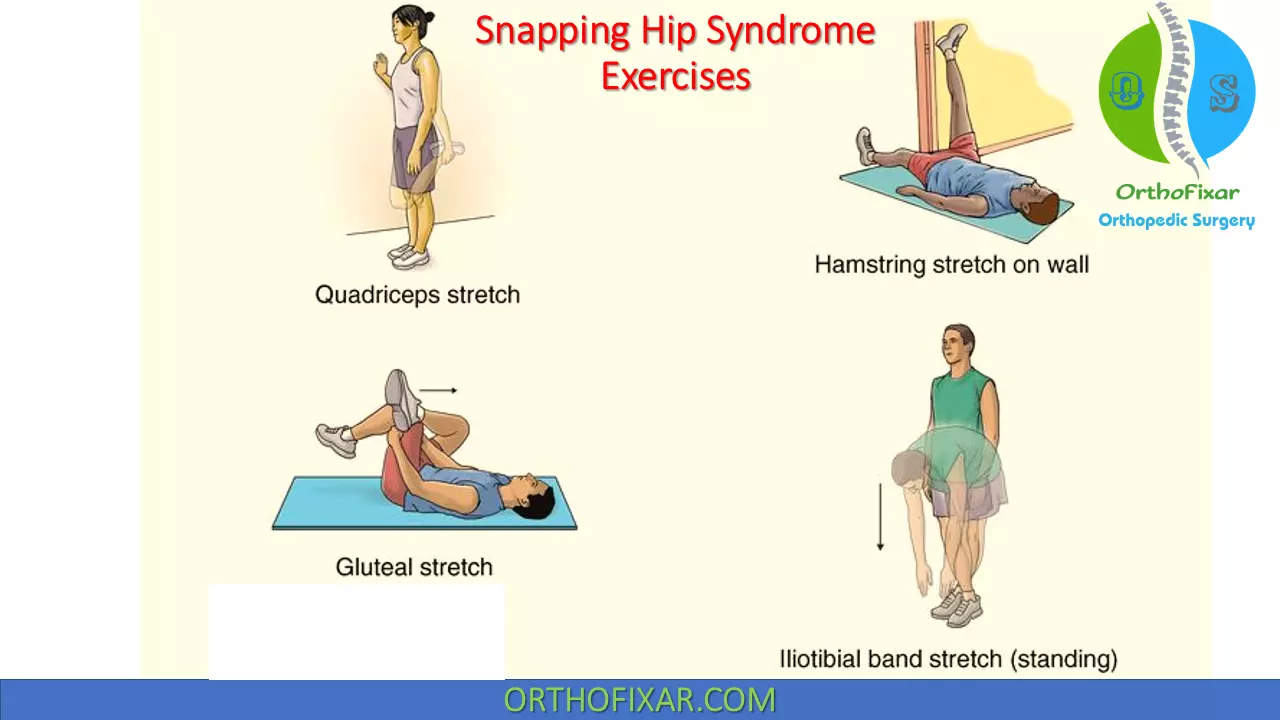
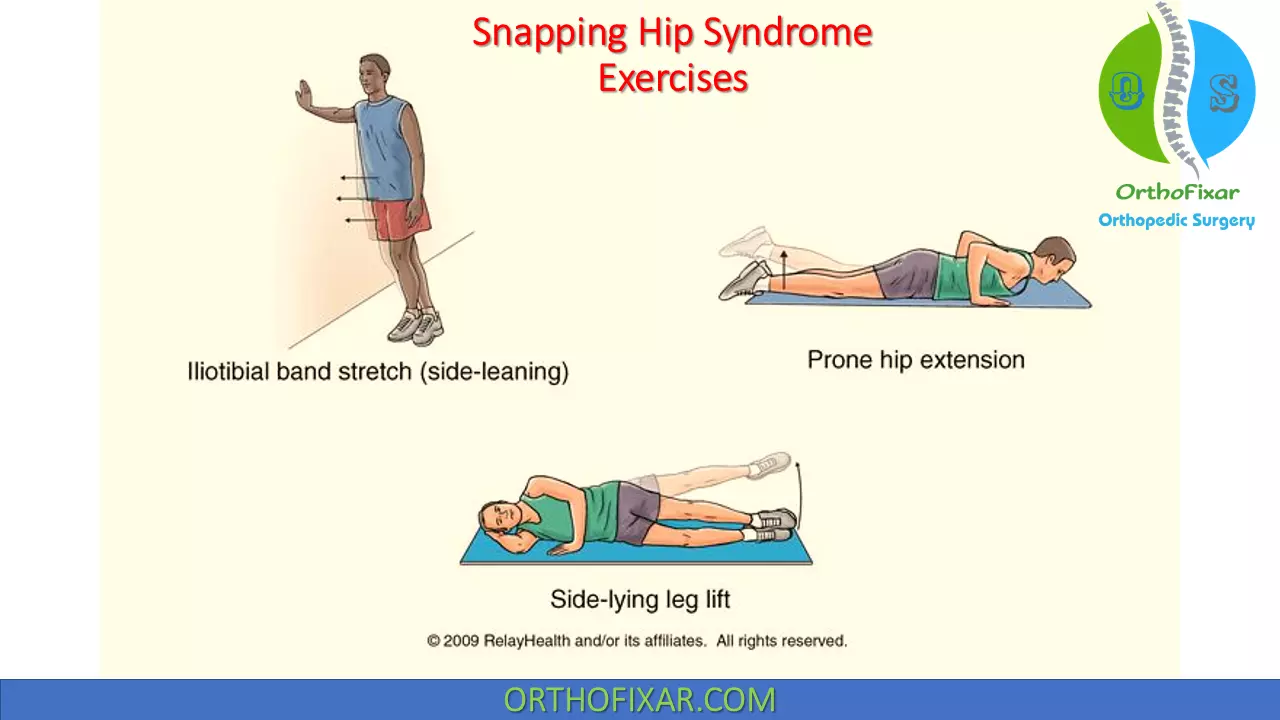
References
- Allen WC, Cope R. Coxa Saltans: The Snapping Hip Revisited. J Am Acad Orthop Surg. 1995 Oct;3(5):303-308. doi: 10.5435/00124635-199509000-00006. PMID: 10790668.
- Teitz CC, Garrett WE Jr, Miniaci A, Lee MH, Mann RA. Tendon problems in athletic individuals. Instr Course Lect. 1997;46:569-82. PMID: 9144000.
- Jacobson T, Allen WC: Surgical correction of the snapping ilipsoas tendon. Am J Sports Med 18:470–474, 1990.
- Lyons JC, Peterson LFA: The snapping iliopsoas tendon. Mayo Clin Proc 59:327–329, 1984.
- Sammarco GJ: The dancer’s hip. Clin Sports Med 2:485–498, 1983.
- Schaberg JE, Harper MC, Allen WC: The snapping hip syndrome. Am J Sports Med 12:361–365, 1984.
- Binnie JF. V. Snapping Hip (Hanche a Ressort; Schnellende Hufte). Ann Surg. 1913 Jul;58(1):59-66. doi: 10.1097/00000658-191307000-00006. PMID: 17863038; PMCID: PMC1407624.
- Brignall CG, Brown RM, Stainsby GD: Fibrosis of the gluteus maximus as a cause of snapping hip. A case report. J Bone Joint Surg Am 75:909–910, 1993
- Faraj AA, Moulton A, Sirivastava VM: Snapping iliotibial band: report of ten cases and review of the literature. Acta Orthop Belg 67:19–23, 2001.
- Altenberg AR: Acetabular labrum tears: a cause of hip pain and degenerative arthritis. South Med J 70:174–175, 1977.
- Millers Review of Orthopaedics -7th Edition Book.
- Dutton’s Orthopaedic Examination, Evaluation, And Intervention 3rd Edition.
- Lifetime product updates
- Install on one device
- Lifetime product support
- Lifetime product updates
- Install on one device
- Lifetime product support
- Lifetime product updates
- Install on one device
- Lifetime product support
- Lifetime product updates
- Install on one device
- Lifetime product support